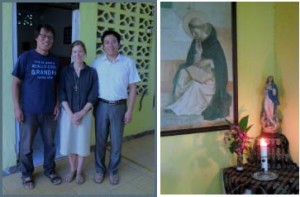
In contrast to schools in Europe, the USA, Canada and most Asian countries, many students in East Timor aspire to become priests, Sisters or Brothers. There are dozens of Religious Orders registered with the local Church that work in parishes, run schools, formation centers and various ministries. The Diocesan Seminaries are also quite crowed.
Why do so many youth in East Timor aspire to become priests and Religious? On the one hand, it’s related to high levels of unemployment, the high cost of university education, few vocational options and the privileged status of Religious in East Timorese society. Such socioeconomic factors are undeniable, but they don’t tell the whole story.
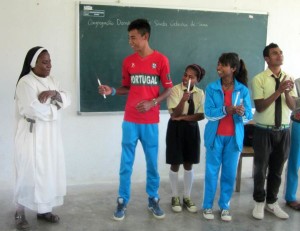
Youth in East Timor have grown up with the powerful presence of the Catholic Church. Many are very grateful to the priests, Bishops, Religious and even Pope John Paul II, who supported them in their fight for Independence. Some local priests, Sisters and Bishops are still revered as heroes or champions of a cause that took so many lives. In general, their faith in God is strong and they want the Church to play a major role in their society.
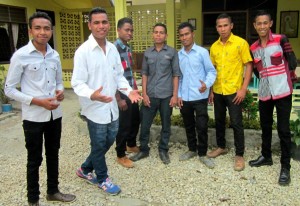
As I try to understand young women and men’s motivations for joining the priesthood or Religious life, I find common themes. One is leadership. The Church and her ministers, both men and women, play important leadership roles in society. Young people regard religious life and priesthood as ways of exercising leadership among the faithful. Service is another aspect. Nearly all aspirants speak of their desire and calling to serve others, build them up, educate and/or lead them to God.
Lastly, there is the common element of wanting to consecrate their lives to God in love. It’s a joy and honor to accompany youth who feel called to such a vocation. Discerning deeply and sorting out their motivations take time, but there are plenty of people to help them. As a teacher, I also feel called to witness Maryknoll’s evangelical life among my students and help them to discern their own call.
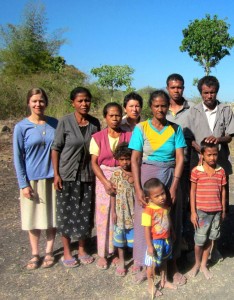
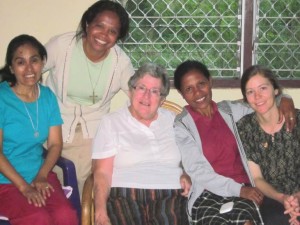
Joana and I became friends in 2008, while I stayed at the local boarding home for poor students. She was one of the women in charge and taught me so much about East Timor.
In 2013, she expressed her desire to join Maryknoll Sisters and is now in our Admissions process. I ask for your prayers and ongoing support, so that we may continue reaching out and welcoming women into our mission!

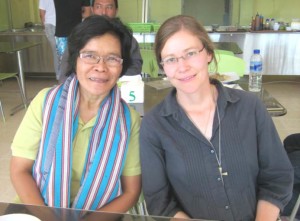
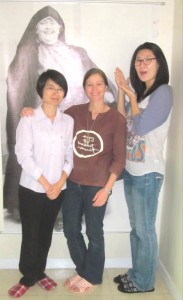
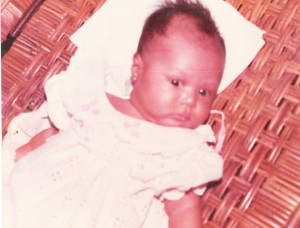 I was looking at some old pictures and this one caught my attention. The baby’s Mother, Virgie, was a Social Worker. We were working together in Manila at the Philippine Agency for community and Family, Inc. (PACAF). Virgie told me her baby’s birthday was April 13…the year was 1983. She said her little girl would be called Hannah Vi. The Vi, she said, was for Virgeen. I felt honored to have her as a namesake. I would be “Lola” (Grandmother) to her and she would be my “Apo” .Years have passed, Hanna Vi is now a Social Worker in Manila.
I was looking at some old pictures and this one caught my attention. The baby’s Mother, Virgie, was a Social Worker. We were working together in Manila at the Philippine Agency for community and Family, Inc. (PACAF). Virgie told me her baby’s birthday was April 13…the year was 1983. She said her little girl would be called Hannah Vi. The Vi, she said, was for Virgeen. I felt honored to have her as a namesake. I would be “Lola” (Grandmother) to her and she would be my “Apo” .Years have passed, Hanna Vi is now a Social Worker in Manila.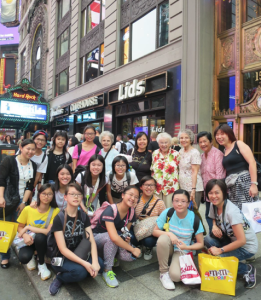

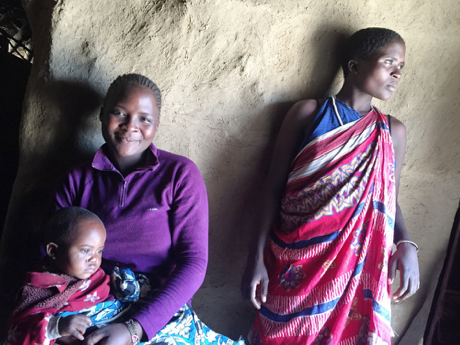
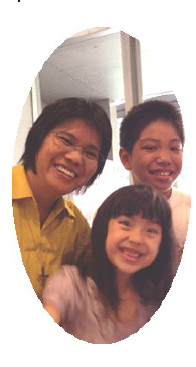

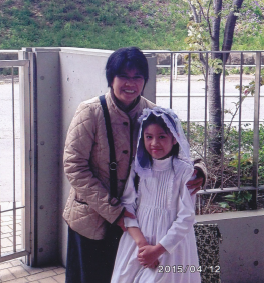 (The motivation for a number of interracial marriages is to obtain legal im-migration status). I pray that he gets his visa soon and he could live together peacefully with his wife and his son, D.
(The motivation for a number of interracial marriages is to obtain legal im-migration status). I pray that he gets his visa soon and he could live together peacefully with his wife and his son, D.